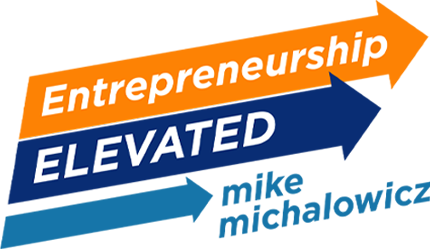Welcome to the first week of our deep dive into Surge. (After all, what better time than summer to go crazy with some surfing puns?)
When I wrote this book I wanted to offer a powerful strategy to help you navigate the ever-changing marketplace. To start, I thought we’d kick things off with an umbrella explanation of Surge and how it can transform your approach to business.
Would the market ever stop changing? Phew.
Nope. The market is a non-stop moving target and constantly shifts based on changing consumer demands. It’s relentless, and poses a significant challenge: how can you stay ahead and know what your customers need next? Traditional approaches might involve hoping for a lucky break, asking customers directly, making predictions based on past experiences, or simply repeating what’s been done before and wishing for different results. But let’s face it, more of the same usually leads to… well, more of the same.
Enter Surge: An approach that positions you on the next wave.
Surge isn’t about predicting trends or making educated guesses. It’s a step-by-step strategy to identify a marketplace wave that’s already formed so you can catch that wave and dominate it. Let’s break it down into five easy steps:
- Separate – Identify your target market.
- Unify – Search for patterns in the market that indicate current needs and future trends.
- Rally – Give your target market a compelling reason to believe in your product or service.
- Gather – Engage your audience and leverage early adopters to market for you.
- Expand – Reach the sell-out stage and maximize your market presence.
Manufacturing luck – not hoping for it
Success isn’t just about stumbling into luck; it’s about manufacturing luck by spotting patterns that others miss. By now you likely know that years ago I had it ALL. And then in one day, I lost it ALL. I’m not the only story like this. Take Becky Blanton’s story, for instance. A few years ago, her story came up at one of my Entrepreneurs’ Organization (EO) meetings. You may have seen her moving TED talk about being a talented writer and journalist from one moment, to homeless for eighteen months. Her story is powerful and a must-watch, but the discussion at EO was about Becky’s unique ability to find lost money on the street. She developed a method based on identifying patterns and, using that method, picked up five to fifty dollars a week. Every week. If I found fifty bucks over the course of a week, I’d think the seas had parted and pigs had learned to fly. Talk about luck, fifty bucks a few weeks in a row would clearly mean I had massive amounts of luck on my side. But for Becky, luck had nothing to do with it. She expected it. She created it. Today, Becky more than has her own home. She has her own business.
When I was writing Surge, I started to think about that elusive “good fortune” so many people in big business success stories seemed to feature. I thought about how no matter how hard I worked, how well I networked, or how many books I read (or wrote, for that matter), my current business still wasn’t taking off. I’d had success in the past, but not this go-round, and had started to buy into the theory that most entrepreneurs subscribe to: Sometimes you do everything right, and you still can’t make your business work. Sometimes you just can’t predict the trends that shake up your industry. Sometimes luck is not on your side. Right?
Wrong. I was wrong. So wrong. After hearing Becky’s story, I began to change my belief about luck and changed my mindset to look for patterns.
The importance of timing
Timing is often the most underrated and ignored factor in success. Just like my Uncle Bill, when asked about the secret to his comedic success, said it all boiled down to timing. The same applies to business. Recognizing the right moment to act can make all the difference, and with Surge, you can influence that timing to your advantage.
Outcome: industry leadership
One of your biggest goals is to become the leader in your industry. Consider the story of Brian Smith of Uggs. He didn’t just look at what was happening around him; he looked to the horizon, to the source of emerging trends. In the 1970s, that meant going to California. He spotted the big splash—the demand for comfortable footwear—and anticipated the ripples that would follow, like the need for neoprene to keep feet warm. His business evolved from there, and we know the success he had.
In the coming weeks, we’ll dive deeper into each of the five steps of the Surge methodology. We’ll explore how to effectively identify your target market, search for meaningful patterns, rally your audience, engage early adopters, and expand your market presence to become an industry leader. We’re going to ride the wave of success together.
I can’t wait to see what you accomplish.
-Mike










